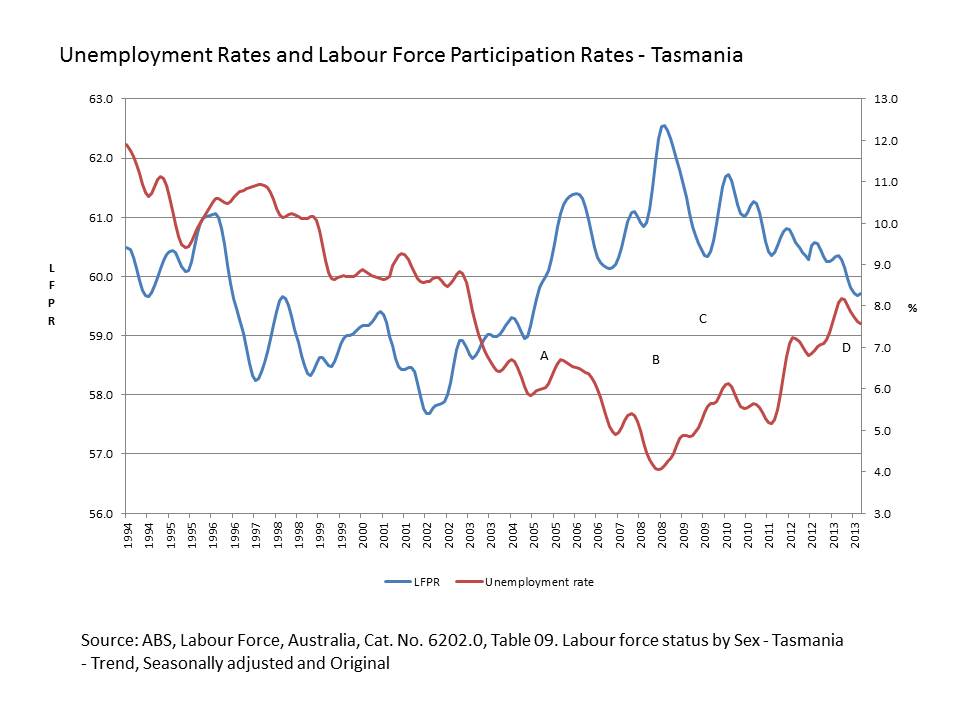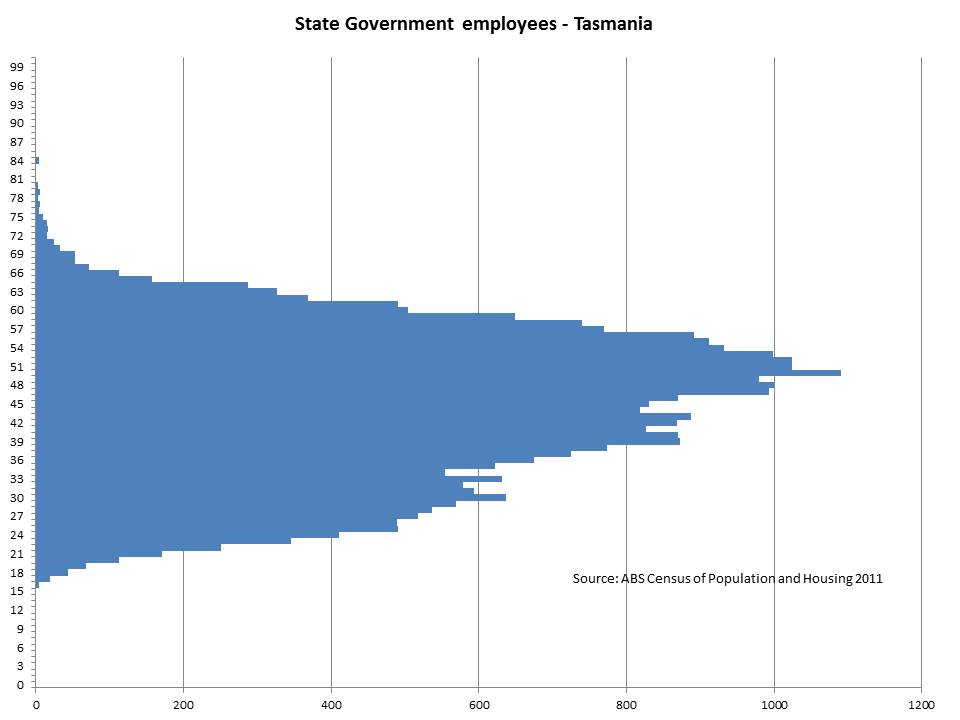So, this morning I have updated the data from that article, and unfortunately I was right - the downward spiral of increasing unemployment rates and decreasing labour force participation rates continued. See the below chart.
So, where is Tasmania now? We are currently just past Point D, experiencing a stablisation of both the labour force participation rate and the unemployment rate - but both are yet to make an upward movement (as in Point A) - the sign of momentum in a recovering economy. We are in much the same place as we were in October 2011, however the economy didn't recover then as it was anticipated to do.
My advice remains the same as it was then - a need for stability and direction to build confidence. Don't take the foot off the pedal and don't count the chickens before they hatch.


